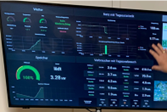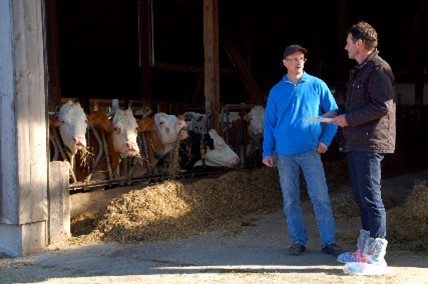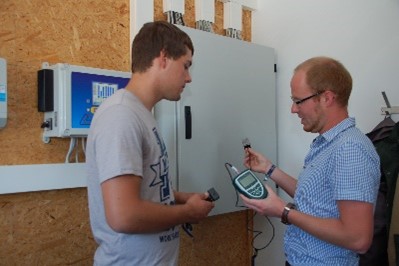Quel était le défi/problème abordé?
Due to the rising costs for farms and the declining profitability of cow’s milk production as well as the rising energy prices and the potential of agricultural enterprises to generate their own electricity and heat, the intention of energy management across the value chain is to reduce costs in the production of cow’s milk (par exemple. by saving electricity) and to increase turnover (par exemple. by selling energy data to other actors of the milk value chain).
Par conséquent, the aim of the project is to design an energy management platform for the dairy value chain (‘DairyChainEnergy’ platform). Whereby the platform will help in solving the following problems that are intensively faced by farmers and the agricultural department at large:
- Lack of (real-time) transparency of energy and C02 balance in the dairy value chain.
- Little knowledge for the farmer on how to reduce energy costs under holistic consideration of the dairy farm.
- Limited options for selling the dairy farm’s own electricity.
Comment as-tu résolu le problème?
The project activities for the project idea (mesure A) are divided into 2 main areas as this will enable the actors to ensure that the main goal of the project achieved by coming up with solutions to the problems being addressed by the project:
1) Building the business concept of the “DairyChainEnergy” platform; Here the following will be tackled;
- Definition of the value proposition and the application scope
- Definition of B2B strategy for partnerships
- Definition of a marketing/ and communication strategy
- Preparation of a cost and revenue plan for implementation
2) Developing the IT concept of the “DairyChainEnergy” platform: The following will be addressed;
- Development of a requirements catalog
- Definition of a business capability map
- Creation of a rough concept for the platform architecture
- Creation of an IT risk assessment and a data flow diagram stand
Ce qui est innovant dans votre cas pratique?
New digital application for German dairy farmers; First FMIS looking in detail at electric energy management at German dairy farms.
Quels sont les facteurs de succès pour résoudre le problème?
Pour la réussite du projet, the following issues will have to be solved. By doing so then the project will be successful: Lack of (real-time) transparency of energy and C02 balance in the dairy value chain. Little knowledge for the farmer on how to reduce energy costs under holistic consideration of the dairy farm. Limited options for selling the dairy farm’s own electricity. Above all interdisciplinary team and regular meetings crown it all.
Échecs inattendus, si seulement
The implementation costs turned out to be higher than expected.
Leçons apprises
So far we have realised that by having an interdisciplinary team during project activity organisation is very important and it helps in time management, specialisation and division of tasks according to someone´s area of expertise. This also reduces mis match of activities and ensure good utilisation of the available resources.
Clear task ownership: once an actor has been allocated a specific task to carry out, owning it and taking it as your responsibility is useful, it usually keeps you on track and determined so as to achieve the goal of your task. It discourages joy riding and ensures no one remains behind. This also makes one have a sense of belonging in the project.
Regular meetings: holding meetings regularly to know how the activities of the project are progressing is very important as this helps in identifying whether the projecting is moving towards the right direction and is in line with the project aims. This helps in mistake identification in early stages that can be addressed easily by going back to the drawing board.
Quel rôle joue le conseiller ou le service de conseil dans le cas pratique?
They are responsible for the Project management and carry out content input for all workstreams in the project.
Votre approche peut-elle être transférée et/ou adaptée à d'autres défis d'innovation et régions?
Oui.
Le moment est critique pour mettre fin à la culture de couverture et la disponibilité de la sertisseuse à rouleaux peut représenter un goulot d'étranglement, please contact Theresa Theunissen (Mobile +49 175 318-7459, E-mail: theresa.theunissen@tum.de)


